Reviews
Sam Peckinpah
USA, 1973
Credits
Review by Steve Macfarlane
Posted on 17 April 2013
Source Warner Home Video DVD
Categories Acid Westerns
Even without the interference of MGM, Sam Peckinpah would have to fight an uphill battle in making Pat Garrett & Billy The Kid, if only because he was Sam Peckinpah. Long itching to break out of his action-maestro pigeonhole, the director found in the soured friendship of William Bonney and newly minted sheriff Pat Garrett an excuse to give the Western its proper eulogy. Released as a failed tentpole, butchered by the studio into an incoherent action jumble, the original MGM version of Pat Garrett has given way to the reputation of a sunken treasure in Peckinpah’s final approved cut, which first aired on TCM in the 80s. This version is a long, relaxed and occasionally lethargic all-you-can-eat buffet of names and faces from the settling of the Old West. Dense and dirgeful, this Pat Garrett & Billy The Kid is littered with signposts of Peckinpah and screenwriter Rudy Wurlitzer’s intent to break the legendary manhunt down into its raw meaning: the literal creep of old age (i.e. stability) upon the land. Shrugging about his new vocation, Garrett insists that becoming law enforcement is “just a way of staying alive.”
Heady stuff, maybe, but much was imperiled by Peckinpah’s legendary alcoholism, a miasma of on-set problems and the good-idea-at-the-time inclusion of Bob Dylan in the film’s composition. Dylan wrote the score - a series of melancholy instrumentals, only occasionally supplemented with lyrics like “Billy, they don’t want you to be so free” - and stars as “Alias”, a knife-throwing member of Billy’s posse. Peckinpah has little time for drawing rock star-gunslinger analogies via Dylan or Kris Kristofferson, who plays Billy, but both characters are welcome as they amble from one New Mexican outpost town to the next, rubbing elbows with old friends and ex-cons, usually escaping only after pumping one associate or another full of lead. Every encounter is its own set piece: seasoned genre uglies like Slim Pickens, Chill Wills, Dub Taylor, Barry Johnson, Jack Elam, L.Q. Jones and so on fill out the supporting cast, each man sweaty and weatherbeaten, recognizing the heat that either Garrett or the Kid are bringing as they walk through his door.
In many ways, Peckinpah draws the struggle between his two titular heroes as the conflict between swiftness and stasis—a notion introduced immediately in the film’s famous sepia tone prologue. Garrett is seen being murdered by a member of the Santa Fe Ring, his former employers, out on a plain in 1909. As his assassin takes aim, the film cuts to a fully colored Fort Sumner, New Mexico, 1881 where The Kid is introduced lounging with his posse, taking shots at roosters for fun. When Billy raises his pistol, it cuts “back” to 1909 and we see Garrett with a meaty shot blown out of his shoulder, falling off his horse in slow motion. Then Peckinpah cuts back to the rooster, blown to smithereens, and back to Garrett falling. The frame freezes mid-fall and James Coburn’s title card comes up; the credits will continue over the hopscotching between 1909 and 1881 for a good five more minutes, with the introduction of Garrett as Billy’s friend (and the only good shot in the bunch, after the Kid himself). Once the credits are over, Garrett tries to break the news to Billy in a friendly way at a nearby saloon: although a former criminal, he’s been asked by New Mexico governor Lew Wallace to apprehend Billy. “Times have changed,” he says. “Times, maybe”, the Kid replies. “Not me.”
Most scenes are either kicked off or capped with more of Dylan’s roaming, almost jazzlike compositions, repeating older themes with new vocal accompaniment or a more strenuous tambourine melody. The songs seem to suggest a preparatory period that goes on forever, a mounting emotional crescendo that never really materializes. Garrett and his men trace Billy and Alias south of the border, eventually conspiring to kill cattle baron Hank Chisum—the true seat of power in New Mexico. “I was the law, riding for Chisum” Billy reminds Alamosa Bill, Garrett’s deputy. “The law’s a funny thing, ain’t it?” The two men reluctantly agree to a proper duel out of fairness. They stand, each man with his back to the other, and Bill makes eight paces. The Kid never walks, just turns around and aims his gun at his opponent’s head. When the Bill turns around (at the eighth pace), The Kid plugs him immediately, then rushes over and more or less holds him in his arms. “That wasn’t ten, Hoss.” Alamosa Bill responds: “I never could count.” The two men smile at each other, and Dylan’s pan flute goes soaring.
This kind of call-and-exchange between dying and living is classic Peckinpah, and it’s hard to imagine any other filmmaker who was as influential in making the onscreen West self-conscious. Coburn beautifully portrays Garrett as a man who, shorn of other options, must turn his back both on his best friend and on his own way of life, but doesn’t fail to notice the barbs tossed his way by everyone he speaks with while he’s searching out the Kid. Kristofferson is lively and charismatic, and if nearly double the actual Kid’s age, he gives him a kind of conciliatory nihilism that sees the character through one shootout after another without ever buckling. The Kid doesn’t evolve from determination to despair over the film’s runtime; he genuinely believes he has a chance to reverse course, even if it means killing Garrett. Peckinpah himself appears in the film’s final moments as a coffin-maker, accosting Garrett outside the mission in Mexico where Billy is hiding. Garrett swigs whiskey while he waits for The Kid to finish making love with one of the Mexican ladies, while Will (Peckinpah) chastises him:
Finally figured it out, huh? I thought you was gonna be out picking shit with the chickens, cutting yourself a $10 bill. Go on, get it over with. You know what I’m gonna do? Put everything I own, right here. [Indicates coffin.] And I’m gonna bury it. In this ground. And I’m gonna leave the territory. When are you gonna learn you can’t trust anybody, not even yourself, Garrett? You chicken-shit, badge-wearing son of a bitch.
Even if this monologue weren’t delivered by the filmmaker, it is nevertheless a painful literalization of the film’s themes, and feels more than a little like an obnoxious gambit thrown down by Peckinpah to insure that Pat Garrett & Billy The Kid wouldn’t stand a chance of being misinterpreted by its audience. The film is at its worst closest to its moment of actualization: Garrett cuts Billy down with one shot, then fires another one into a nearby mirror—into his own reflection. The next day, he and his men ride off into the sunrise while stone-faced Mexicans stand in awe, and the film cuts back to the original juxtaposition that opened it: Garrett’s death in sepia tone, but now, Billy shooting the chicken as well. They are condemned to history, a repeat-loop of shooting (and being shot) that spares both men their camaraderie and their character—in effect, a comment on the type of reductivism that Peckinpah’s film would suffer at the hands of MGM upon its 1973 release.
Speaking of reductivist-revisionism, the bastard cut that originally played in theaters was not included, as was this TCM version, in Pat Garrett & Billy The Kid’s 2005 DVD release. Instead, a new “special edition” was offered, the fruit of an extensive re-edit undertaken by Peckinpah scholars Nick Redman and Paul Seydor. The 2005 cut is respectful, and yet quite different in its own right, but for brevity’s sake it’s worth mentioning that the director’s cameo is nowhere to be found. The editor-scholars aver on the disc’s commentary track that Will’s thematic breakdown is “indulgent” and “over-the-top”, and that Peckinpah would have cut the scene himself if he had gotten around to realizing it was “too much”.
More Acid Westerns
-
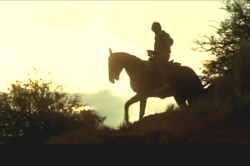
Ride in the Whirlwind
1965 -
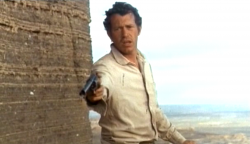
The Shooting
1966 -
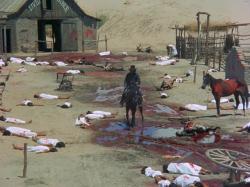
El Topo
1970 -
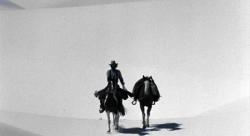
The Hired Hand
1971 -
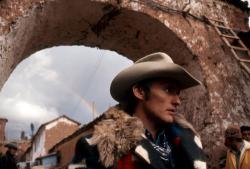
The Last Movie
1971 -
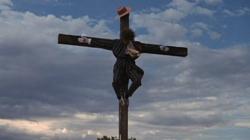
Greaser’s Palace
1972 -
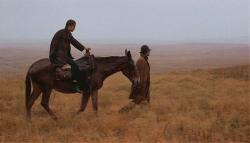
Bad Company
1972 -
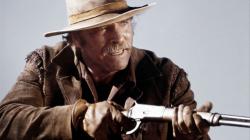
Ulzana’s Raid
1972 -
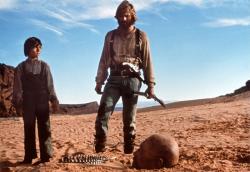
Jeremiah Johnson
1972 -
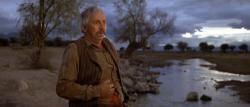
Pat Garrett & Billy the Kid
1973 -
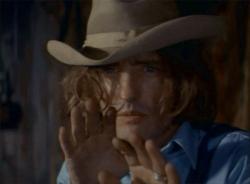
Kid Blue
1973 -
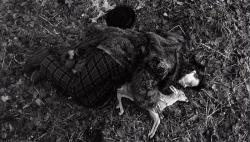
Dead Man
1995
We don’t do comments anymore, but you may contact us here or find us on Twitter or Facebook.



